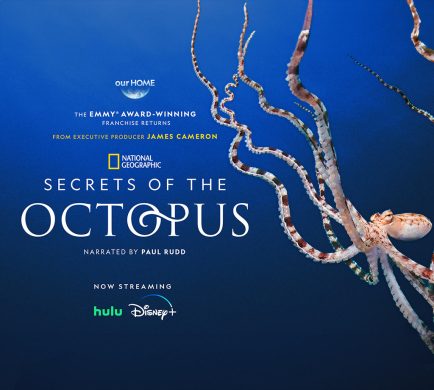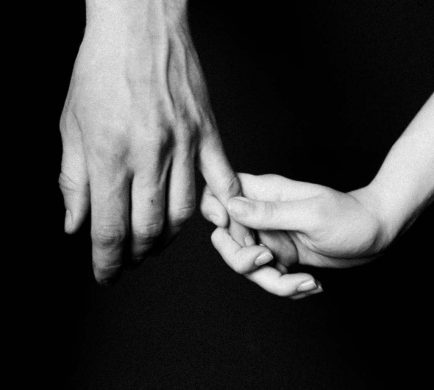Reshape your relationship with consumption and the Earth with a few essential habit shifts.
MAKE A CHANGE WITH A CHALLENGE
In a culture where we are bombarded by consumerism from the moment we wake up until we go to sleep, restraint can be challenging. We can easily become susceptible to quick, unnecessary purchases—even when we have the best intentions. Developing green consumption habits can help you fight more by buying less. Here are three New Year resolutions to get you activated while also streamlining and simplifying your life:
THE COST OF CONSUMPTION
Overconsumption is costing us more than we know.
- Our Time. The more we own, the more time we spend looking for stuff, putting things away, organizing, cleaning, and getting rid of unwanted belongings. The average person spends 1 to 10 minutes a day just looking for items; over a lifetime, that comes to 6.5 months (or nearly 5,000 hours) just trying to find our stuff.
- Our Money. The average American spends nearly $18,000 a year on nonessentials and carries over $6,500 in credit card debt. Ten percent of the U.S. population has a storage unit–costing $91.14/month, on average.
- Our Space: A third of homeowners with a two-car garage can only park one vehicle inside–with the average American home containing over 300,000 items.
The Planet. Overconsumption is one of the main drivers of the climate crisis. A 2015 study found that household consumption, which includes the production and use of all of the stuff we buy and services we utilize, accounts for 60% of global greenhouse emissions—with footprints
skewing heavily on wealthier nations such as the United States. The U.S. makes up just over 4% of the world’s population and yet, for decades, has used one-third of the world’s total material consumption.
Ease of the Excess
In a society already responsible for “too much,” buying more is not the answer, even if a product is made sustainably. Use your spending habits to fight for the future you want by cutting out the excess. Take a one-month “Ease of the Excess Challenge” to discover ways to make your purchases more intentional and find resources to help you buy less “brand-new.” Don’t worry. You can still purchase necessities like food, personal care essentials (hey, we still have to brush our teeth), any medical or health needs, including prescriptions, bills, repairs (a broken pipe cannot wait), essential services, pet basics, etc. Nonessentials that you will be avoiding during the challenge
include clothing (assuming you have yet to move from a nudist colony), makeup, toys, home decor, etc. Instead, use what you already own. If you need a nonessential item during the challenge, skip buying it brand-new and try getting it secondhand, for free (check out your local Buy Nothing group if you haven’t already), borrowed from a friend, or as a rental.
Begin the challenge on the first of the month for a clean start, and an optional bonus is to give yourself one free pass (meaning you’re allowed to buy one nonessential during the month). Getting to buy one new item might sound like cheating, but it can help you be more mindful about what you are choosing to consume.
Eco-Tip: If you’re feeling shopping withdrawal, choose connection over consumption. Go for a run, read a good book, get a drink with a friend, spend time with your family, or plan a date with your partner. Connecting with yourself or someone you care about is much more fulfilling.
Resolution #2. Join the Reuse Revolution
If there is anything that’s so last year, it’s single-use items. Fifty percent of the plastic we use is single-use, meaning that it is used for minutes—sometimes seconds—and then thrown away. But it’s not just plastic that’s the issue – it’s all single-use items. Set a 2024 challenge to go without single-use items for a month (or even the full year).
To begin transitioning away from disposables (even non-plastics), start small by bringing a shopping tote and reusable produce bags to the grocery store and carrying a utensil kit in your bag or stashed in your desk drawer to avoid using disposable cutlery, swap paper napkins for cloth, paper towels for rags, plastic snack bags for reusable ones, and tampons or pads for a menstrual cup.
Eco-Tip: Don’t Be Perfect: Taking steps toward leading a more sustainable life isn’t about being perfect. It’s about doing what you can. If you mess up, it’s okay. Please don’t do it because you can’t do everything. Even if you’re not 100% successful, it can be enlightening to see how many disposable products you encounter and highlight where to start looking for alternatives. You’ll also learn where and when to anticipate disposables—and ways to avoid them.
Resolution #3. Consciously Clear the Clutter
Research shows what we already know: mess equals stress. Kick off 2024 by decluttering your home and creating space for more of what matters most–while riding responsibly. Here are 5 places to start:
- Kitchen. The first step to a waste- and clutter-free kitchen is to eat what you already own. Food waste is estimated to be responsible for 6–8% of global greenhouse-gas emissions. That’s three times the global emissions from aviation. Additionally, 43% of all food waste in the United States happens in our homes, with the average American household throwing away 31.9% of the food it buys. When analyzed against all of the world’s most effective solutions to fight the climate crisis, reducing food waste is ranked third.
Where to begin? By eating your way through your pantry and fridge. Don’t (always) be afraid of expired food. If the packaging hasn’t been damaged (no rust, dents, or swelling) and the food still smells and tastes okay; it’s likely fine to eat it (with the infant formula as the exception–the expiration date there is a hard deadline). According to the USDA, most shelf-stable foods are safe to eat long past their sell-by date. (We’re talking years in some cases for canned goods.) End-date labels are voluntarily put on products to help consumers understand when food may be best by. They do not indicate that food is no longer safe to eat. If there is food that you aren’t going to consume or is expired, donate it to a local food bank. They will generally accept expired shelf-stable food with undamaged packaging.
- Bathroom. Spend 2024 using up the cosmetic graveyard you have stashed in the back of your bathroom cabinet. That means, before you buy anything new, finish up your half-used bottles of shampoo and lotion. Only once you are completely out of a product type should you replace it. However, if a product is expired or unsafe to use, like that 10-year-old eyeliner at the bottom of your makeup bag, toss it. Products not to your liking but are safe, such as conditioner or body wash, can be posted on Buy Nothing to find them a new home. (The same can be said for your cleaning supplies.) Once you’ve worked your way through everything, be conscious to use up products (or find disliked ones in a new home) before opening a new one.
- Closet. Donation drop-off points often appear to be a simple way to pawn off unwanted clothes, no matter their condition. This habit has left donation centers overwhelmed, unable to handle or resell all that is left at their doorsteps. (Thrift stores sell only about 20% of donated clothing.) So, while donating might feel like you’re doing something good with your unwanted clothing, a colossal amount of these goods ends up in the landfill.
The best way to get rid of unworn clothing is to give it to someone you know will actually wear it. Buy Nothing is a great place for that–or selling it for a low price on Poshmark to ensure it sells quickly and is out of your home in a snap. Another option is to get a Take Back Bag from For Days. They will take wearable clothing and textiles that are beyond wear (like your yellow armpit-stained t-shirts and holey underwear.) They work with their network of recycling partners to ensure the clothing and textiles are re-worn, reused, and repurposed properly.
- Home Office. Are you tired of sifting through junk mail? It’s time to stop the flow. As the Federal Trade Commission suggests, you can register at DMAchoice.org ($2 fee) to get fewer marketing pieces and catalogs and at optoutprescreen.com to stop credit card and insurance offers. You can also download the PaperKarma app, snap a pic of your unwanted marketing mail, and get less junk in 6 to 12 weeks (fees apply). And don’t forget to unsubscribe from unwanted emails–your inbox has a carbon footprint too.
- Your Junk Drawer. Say no to random free giveaways and swag. They don’t deserve a place in your house (or your time getting rid of them). This includes plastic utensils, so when ordering takeout, say no to extra cutlery, paper napkins, condiments, etc., that are just going to end up in the back of your kitchen drawers.







